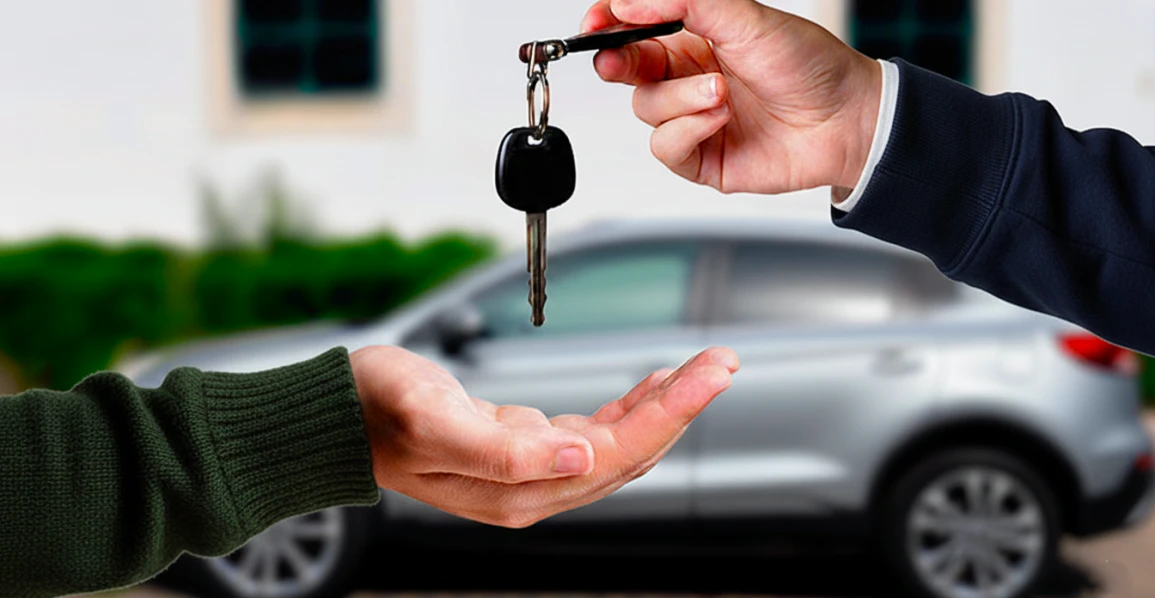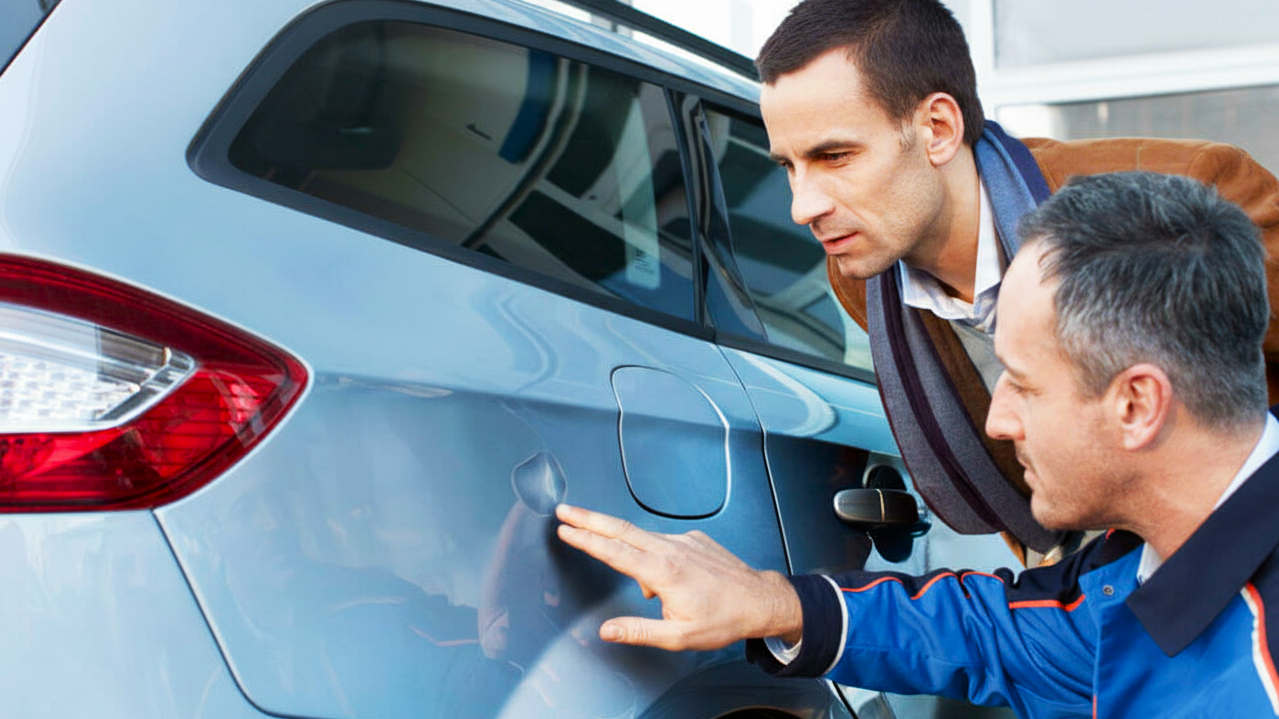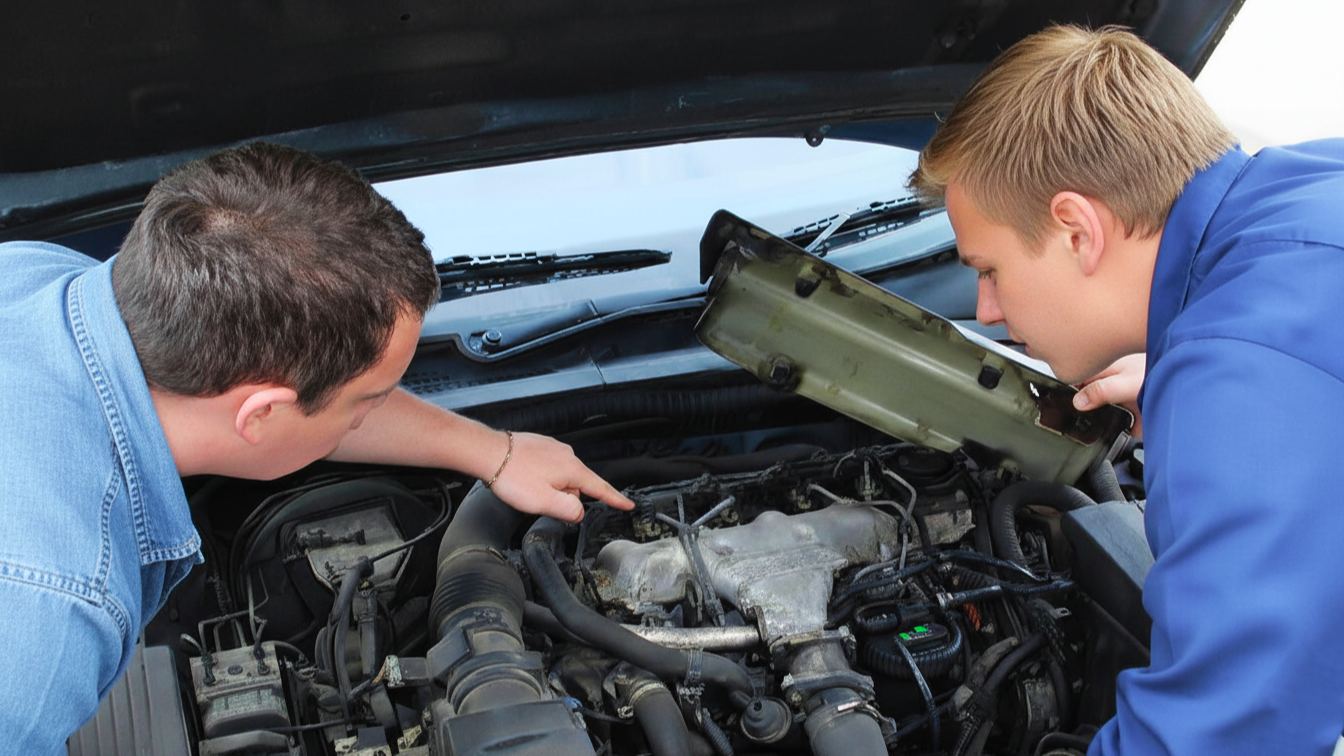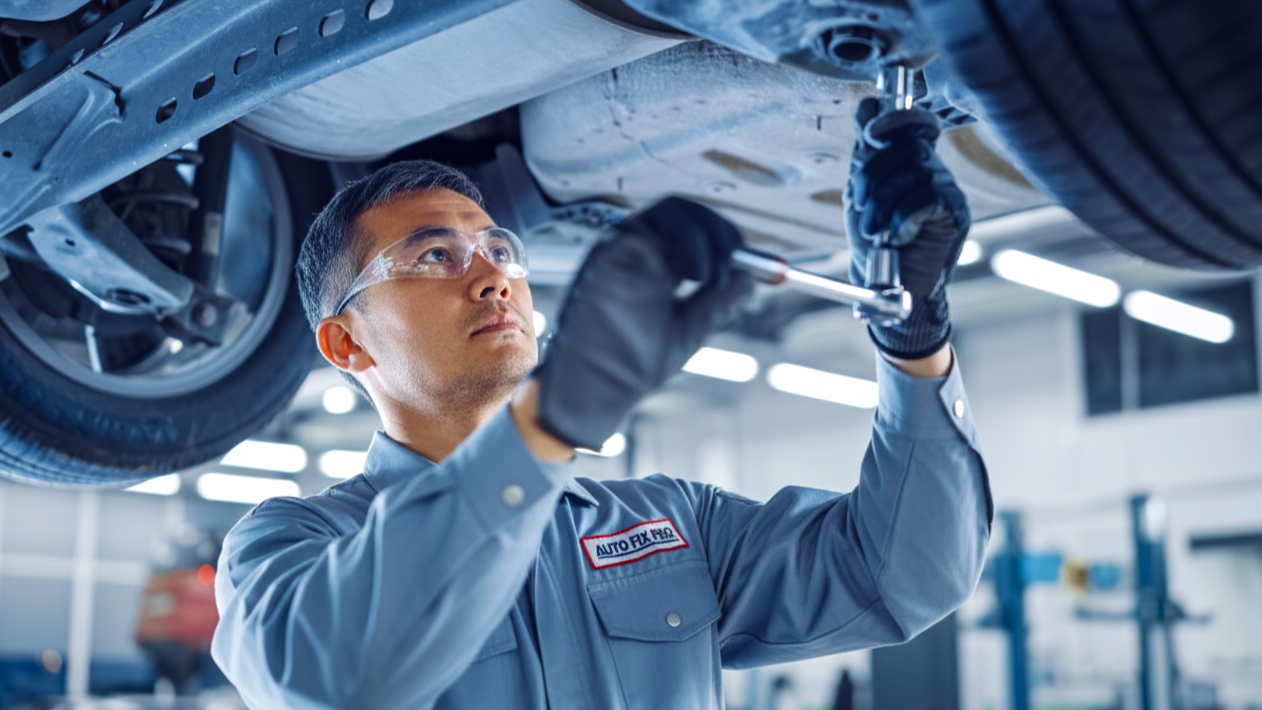How to Choose a Used Car: Key Things to Check

Purchasing a used car in Cyprus can be both an exciting and daunting experience. While the allure of a good deal is tempting, it's essential to approach the process with caution. Cyprus' unique market dynamics, including higher import taxes and the prevalence of left-hand drive vehicles, can influence both the availability and condition of used cars. Additionally, the island's warm climate and specific road conditions can impact a vehicle's wear and tear.
To ensure you make an informed decision and avoid potential pitfalls, it's crucial to conduct a thorough inspection. In this article, we’ll guide you through a detailed used car inspection checklist, helping you assess the key areas to check before finalizing your purchase. By following these steps, you can confidently navigate the Cypriot used car market and secure a vehicle that meets your needs and expectations.
Why It’s Important to Check a Used Car Thoroughly

When buying a used car, especially in a market like Cyprus, taking the time to inspect the vehicle can save you from unexpected repair costs and future headaches. While the price of a second-hand car may seem like a good deal, the reality is that many used cars come with hidden issues that may not be apparent at first glance.
In Cyprus, where the climate is generally hot and dry, the wear and tear on a vehicle can be different from what you might find in other regions. The heat can lead to quicker deterioration of rubber seals, tires, and other components. Additionally, many cars imported to Cyprus may have been exposed to conditions that could affect their long-term reliability. That’s why it’s essential to carry out a comprehensive used car inspection checklist to identify any potential issues before making a purchase.
The goal of a thorough inspection is to ensure that you're not only getting a car that’s mechanically sound but also one that will serve you well for years to come. It’s a key step to avoid buying a car that will cost you far more than you initially bargained for.
Preparing for the Inspection
Before diving into the actual inspection of a used car, preparation is key to ensuring you don’t miss any important details. Taking a few preliminary steps can help you avoid unnecessary stress during the inspection process.
- Research the Car’s History. Before you even lay eyes on the car, it's crucial to gather some background information. In Cyprus, you can often request a vehicle history report, which may include past ownership details, accident history, and any outstanding finance. Knowing the car’s history will give you a better understanding of its condition and whether it has been well-maintained.
- Check the Paperwork. Make sure all documents are in order. The car should have a valid MOT certificate, proof of ownership (such as the vehicle registration document), and any service records. If the seller cannot provide these documents, it could indicate potential issues with the vehicle’s history.
- Inspect During Daylight Hours. Whenever possible, try to inspect the car during daylight hours. Natural light will give you the best view of the car's exterior and interior, helping you spot any damage, rust, or wear and tear that might not be visible under artificial lighting.
- Bring a Friend or Expert. If you're not familiar with car mechanics, it can be very helpful to bring someone who knows what to look for, or even better, hire a professional to conduct a pre-purchase inspection. They can spot potential issues that you might overlook and can give you a more objective assessment of the vehicle.
The Walk-Around: Visual Inspection

One of the most important steps in the used car inspection checklist is the visual inspection. During this phase, you’ll want to carefully examine the car’s exterior and interior to identify any signs of damage, wear, or potential issues that could affect its performance.
1. Exterior Condition. Start by checking the car’s body for any visible signs of damage, such as scratches, dents, or rust. Pay close attention to the following:
- Paint condition. Look for any mismatched paint, which may indicate repairs from previous accidents.
- Panel alignment. Check that all the panels are aligned correctly. Uneven gaps between doors, fenders, and the hood could be signs of previous accidents or poor repairs.
- Rust. Cyprus’ dry climate can slow the onset of rust, but it can still appear, especially on older cars or those kept near the coast. Look around the wheel arches, undercarriage, and door frames.
2. Wheels and Tires. Inspect the wheels and tires for any signs of damage, such as cracks or deep gouges. Uneven tire wear may indicate alignment issues or suspension problems. Additionally, check the tire tread depth to ensure the tires are still safe to drive on.
3. Glass and Lights. Check all windows and mirrors for cracks or chips. Damaged glass can be costly to repair or replace. Inspect the headlights, taillights, and indicators to make sure they are functioning properly and free from cracks.
4. Interior Condition. The interior of the car can tell you a lot about how well it has been maintained. Look for:
- Seats and upholstery. Check for any tears, stains, or signs of wear, especially on the driver’s seat, which tends to experience the most use.
- Dashboard. Make sure all the buttons, knobs, and controls are functioning. Look for any warning lights or malfunctions in the dashboard display.
5. Check for Leaks. Look under the car for any visible leaks. Oil, coolant, or brake fluid leaks can indicate problems with the engine or brake system. A clean, dry engine bay is typically a good sign, while visible signs of fluid leakage should be considered a red flag.
Checking the Documents and History

Once you’ve completed the visual inspection of the used car, it's time to take a closer look at the car's paperwork and history. Verifying the authenticity of the vehicle’s documents can save you from buying a car with hidden issues or legal complications.
- Vehicle Registration (V5C). The car should have a valid Vehicle Registration Document (V5C), which proves its legal ownership. In Cyprus, the registration should be in the seller’s name. Ensure the VIN (Vehicle Identification Number) on the document matches the one on the car (located on the dashboard or inside the driver’s side door frame).
- MOT and Service Records. Check for a current MOT certificate, which proves that the car has passed a roadworthiness test in Cyprus. Make sure it is up to date and covers the entire validity period. Also, ask for the service records. These documents will tell you how well the car has been maintained, including whether regular oil changes, brake checks, and other maintenance tasks were completed on time.
- Vehicle History Report. In Cyprus, you may be able to request a vehicle history report. This report will highlight important details like previous owners, accident history, and whether the car has been involved in any major incidents. It's also wise to check if the car has any outstanding finance or if it has been marked as stolen.
- Outstanding Recalls. Verify if the car has any unresolved safety recalls. Some manufacturers may issue recalls for defects that could pose a safety risk. Ensuring that the car has undergone any necessary recall repairs is essential for your safety and the vehicle’s performance.
- Ownership and Import Documents. If the car has been imported to Cyprus, make sure the appropriate import papers and customs declarations are in order. This ensures that there are no legal issues with the car’s importation or registration in Cyprus.
Under the Hood: Engine and Mechanical Inspection

Once you’ve inspected the exterior and reviewed the documents, it’s time to check the heart of the car — the engine. A thorough inspection of the engine can reveal a lot about the car’s overall health and potential future issues.
- Engine Oil. Start by checking the engine oil. Pull out the dipstick, wipe it clean, and reinsert it to get an accurate reading. The oil should be at the correct level and should not be too dark or thick. Dark, sludgy oil can be a sign of poor maintenance or that the engine has been overworked. Also, if the oil level is low, it could indicate an oil leak or internal engine problems.
- Coolant and Other Fluids. Check the coolant level to ensure that it’s adequate. The coolant should be a bright color (usually green or orange) and free from debris. Low coolant levels can indicate leaks or potential issues with the radiator or hoses. Also, inspect the brake fluid, power steering fluid, and transmission fluid, making sure they are at the appropriate levels and in good condition.
- Timing Belt or Chain. Check if the car uses a timing belt or timing chain. Timing belts typically need to be replaced at regular intervals (usually every 60,000–100,000 miles), and failure to do so can result in severe engine damage. If the car has a timing belt, ask the seller if it has been replaced and when. A timing chain generally lasts longer, but it’s still worth checking for any signs of wear.
- Leaks and Corrosion. Look for any signs of leaks under the hood, especially around the engine block, radiator, and hoses. Fluid leaks can indicate problems with gaskets, seals, or hoses, and they can lead to expensive repairs. Also, check for any visible corrosion or rust, particularly on metal components, which can indicate water damage or poor care.
- Engine Performance. Start the engine and listen for any unusual noises such as knocking, rattling, or whining. A smooth-running engine should start easily and run quietly. Any strange sounds can be a sign of serious engine issues that will require expensive repairs.
- Belts and Hoses. Inspect the belts and hoses for any signs of wear, cracks, or fraying. Worn or damaged belts can cause the engine to malfunction and should be replaced immediately. Also, check for any loose or missing hoses.
Test Drive: Evaluating Performance

After inspecting the exterior, documents, and under the hood, it’s time for the final and most crucial part of the used car inspection checklist — the test drive. This is where you get to experience the car’s performance firsthand and assess its driving comfort and handling.
- Start the Car. When you start the car, pay attention to how smoothly it starts. The engine should start quickly without hesitation or rough idling. If there’s any difficulty starting the car, or if it struggles to idle, it could indicate an issue with the battery, starter motor, or fuel system.
- Brakes. During the test drive, test the brakes at various speeds. The car should stop smoothly without pulling to one side or making any strange noises. Listen for any grinding or squeaking sounds, which could indicate worn-out brake pads or discs. Also, ensure the brake pedal feels firm and responsive.
- Suspension and Handling. Pay attention to how the car handles on different types of roads. The suspension should absorb bumps and road imperfections without making any noise or feeling too stiff. When cornering, the car should stay stable and not sway excessively. Any unusual sounds, such as clunks or squeaks, could point to suspension issues or worn-out shock absorbers.
- Transmission. Whether the car has a manual or automatic transmission, it should shift smoothly. In a manual car, the clutch should engage easily without any slipping or jerking. For automatic transmissions, the car should change gears seamlessly, without hesitation or harsh shifting. Pay attention to any delays or rough shifts, as these could be signs of transmission problems.
- Steering. Test the steering at different speeds and while turning. The steering should be responsive and feel light but controlled. If the steering feels too heavy or loose, there may be issues with the power steering system or alignment. Also, check for any unusual noises when turning the wheel, which could indicate problems with the steering rack or suspension.
- Noise and Vibration. While driving, listen for any abnormal sounds from the engine, suspension, or exhaust. The car should be relatively quiet and smooth, with minimal vibration. Excessive noise or vibration can indicate mechanical problems, such as issues with the exhaust system, engine mounts, or transmission.
- Comfort and Features. Finally, assess the comfort of the car. Test the seats, air conditioning, and entertainment system. All the features should be in working order, including the windows, mirrors, and dashboard controls. If anything feels off or malfunctions, it could be a sign that the car has been poorly maintained.
Red Flags: Common Issues to Watch Out For

While a used car can be a great value, there are several red flags that could indicate serious issues with the vehicle. Being aware of these warning signs can help you avoid costly mistakes. Here are some common problems to watch out for during the inspection process:
- Inconsistent or High Mileage. One of the most concerning signs is when the car's mileage doesn’t match its age or the condition of the car. For example, if a car is only a few years old but has unusually high mileage, it could indicate that the car was used excessively or under harsh conditions. Conversely, if the mileage seems too low for the car's age, there could be a possibility of odometer fraud, where the mileage has been tampered with.
- Suspicious Paperwork. If the seller cannot provide proper documentation, such as the Vehicle Registration or service records, this is a huge red flag. Missing documents can suggest that the car has been involved in illegal activity, such as being stolen or having outstanding debts. Always ensure that the paperwork is complete and matches the car’s details.
- Visible Frame Damage. If you spot any significant damage to the car’s frame or undercarriage, this could be a sign of a past accident. Frame damage is usually expensive to repair and can affect the car’s safety and performance. Be wary of cars that have been involved in major collisions, as repairs may not always be visible on the surface.
- Engine Issues. If the engine sounds rough or has trouble starting, it could indicate serious mechanical problems. Unusual knocking sounds, excessive smoke from the exhaust, or a burning smell can be signs of engine failure or internal damage. If the car is leaking fluids or has oil splashed around the engine bay, this could also suggest potential engine issues.
- Check Engine Light. The check engine light is an obvious warning sign that something isn’t right with the car. While it might be something as simple as a loose gas cap, it can also indicate more serious issues like problems with the engine, emissions system, or transmission. If the check engine light is on, it’s best to get the car professionally diagnosed before proceeding with the purchase.
- Unusual Smells. Pay attention to any strange odors while driving or while the car is idling. A strong, musty smell may indicate mold or water damage, which can be expensive to repair. A burning smell could signal electrical issues or problems with the brakes or engine. If the car smells like exhaust, it could be a sign of a problem with the exhaust system or a leak.
- Poor Maintenance. If the car looks like it’s been poorly maintained — for example, with dirty or corroded parts, cracked rubber seals, or worn-out tires — this could indicate neglect. While minor cosmetic issues are often easy to fix, poor maintenance can lead to much larger, more expensive problems down the line.
Conclusion: Making an Informed Decision

After following the used car inspection checklist and carefully considering all the factors, you should have a good idea of whether the car is worth purchasing. A thorough inspection can help you avoid buying a car with hidden issues and ensure that you're getting good value for your money.
Remember that buying a used car is an investment, and it's worth taking the time to check everything thoroughly. If you encounter any red flags or feel unsure about the condition of the car, it’s always a good idea to walk away and keep looking for another option.
If you’ve found a car that checks all the boxes — solid documentation, clean history, and a smooth test drive — then you can confidently move forward with the purchase.
For added peace of mind, consider having a professional mechanic inspect the car before you finalize the deal. This can help ensure that any minor issues are caught before they become costly repairs.
Buying a used car in Cyprus doesn’t have to be a stressful experience. By following this checklist and being diligent about the inspection process, you can ensure that you make a smart, well-informed decision.
Looking for a reliable, pre-owned vehicle? At BuyCars, we offer a wide selection of thoroughly inspected used cars that are ready to hit the road. Browse our collection today to find the perfect car for your needs, all backed by full transparency and quality assurance.


